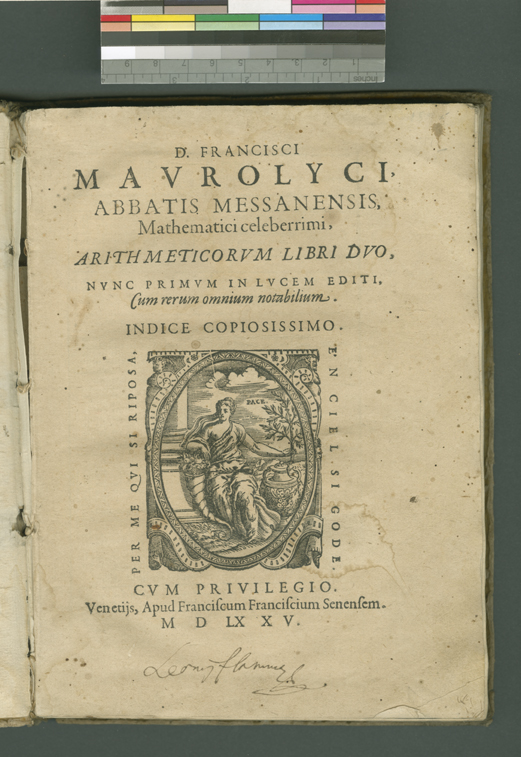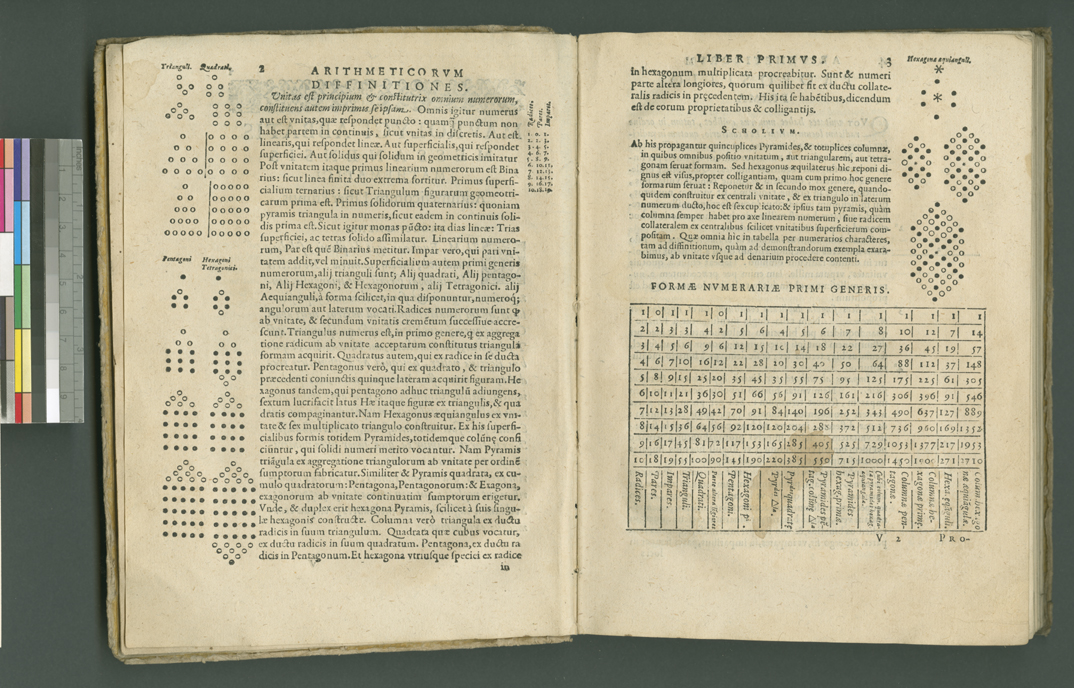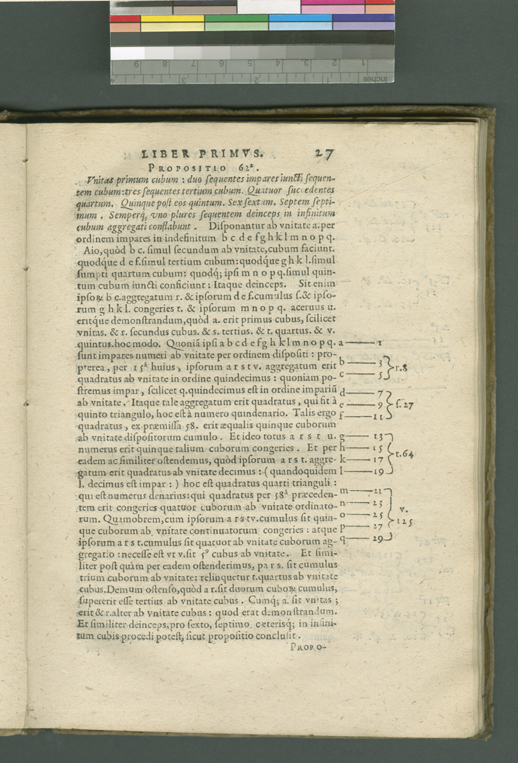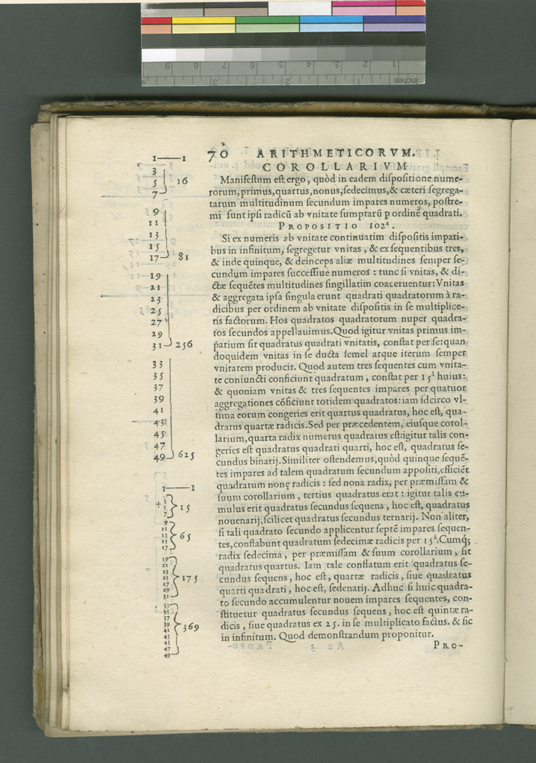- About MAA
- Membership
- MAA Publications
- Periodicals
- Blogs
- MAA Book Series
- MAA Press (an imprint of the AMS)
- MAA Notes
- MAA Reviews
- Mathematical Communication
- Information for Libraries
- Author Resources
- Advertise with MAA
- Meetings
- Competitions
- Programs
- Communities
- MAA Sections
- SIGMAA
- MAA Connect
- Students
- MAA Awards
- Awards Booklets
- Writing Awards
- Teaching Awards
- Service Awards
- Research Awards
- Lecture Awards
- Putnam Competition Individual and Team Winners
- D. E. Shaw Group AMC 8 Awards & Certificates
- Maryam Mirzakhani AMC 10 A Awards & Certificates
- Two Sigma AMC 10 B Awards & Certificates
- Jane Street AMC 12 A Awards & Certificates
- Akamai AMC 12 B Awards & Certificates
- High School Teachers
- News
You are here
Mathematical Treasures - Franciscus Maurolycus's Arithmeticorum libri duo

This is the title page of the Arithmeticorum libri duo (Two Books of Arithmetic) (1575) by Franciscus Maurolycus (1494-1575). Maurolycus was an Italian mathematician and astronomer, who wrote numerous mathematical works. This particular book, completed several years earlier but only published in the year of his death, contains much material on what we would call number theory. Some of Maurolycus's proofs in the book are essentially by the method of mathematical induction, although Maurolycus does not identify the method specifically.

In this introductory material, Maurolycus defines the various types of figurate numbers - triangles, squares, pentagons, hexagons, and so on. He gives a table of the first ten instances of each type of number. For example, the first ten pentagonal numbers are 1, 5, 12, 22, 35, 51, 70, 92, 117, and 145.

On p. 7 of the Arithmeticorum libri duo, Maurolycus states in proposition 16 that the sum of a certain quantity of odd numbers beginning with 1 is the square of the quantity, or, in modern language, that the sum of the first n odd numbers is n2. It is often stated that Maurolycus's proof is by mathematical induction, based on his use of the two previous propositions. Proposition 14 states that if you add to the square of a particular number the odd number indexed by the next number, the result will be the square of the next number. Proposition 15 states if you add to the square of a particular number twice that number plus one, you will get the square of the next number. The reader should consider how Maurolycus's results relate to the principle of mathematical induction.

On p. 10 of his book, Maurolycus proves that every perfect number is hexagonal and also triangular.

On p. 27 of his book, Maurolycus shows how cubes are generated from sums of consecutive odd numbers. That is, 1 = 13, 3 + 5 = 8 = 23, 7 + 9 + 11 = 27 = 33, and so on.

On p. 70, Maurolycus shows how sums of consecutive odd numbers give fourth powers: 1 = 14, 1 + 3 + 5 + 7 = 16 = 24, 1 + 3 + 5 + 7 + 9 + 11 + 13 + 15 + 17 = 81 = 34, and so on.
Frank J. Swetz and Victor J. Katz, "Mathematical Treasures - Franciscus Maurolycus's Arithmeticorum libri duo," Convergence (January 2011)




